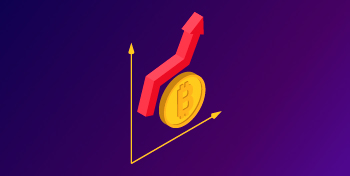Tesla’s purchase of $1.5 billion worth of Bitcoins back in February was one of the main catalysts for the BTC price to rise from $42,000 to almost $65,000 over the next two months. And a number of well-known brands, such as Square, PayPal, Visa and others, have either expanded existing bitcoin offers and cryptocurrencies, or even launched new services.
However, one of the biggest indicators of institutional investment and sentiment throughout this, at least until the recent launch of several ETFs in Canada and other countries, was Bitcoin Trust Grayscale (GBTC). The trust, which is open exclusively to accredited investors and institutions for initial investments and deposits, showed an almost 800% increase in assets under management (AUM) during the bull run, from about $5 billion in October 2020 to almost $40 billion in April 2021.
However, the lull in the bullish bitcoin market has hurt Grayscale, and there are concerns that the company’s long-term prospects may pose a short-term threat to the dynamics of the Bitcoin price, especially with regard to the unblocking of GBTC shares that will occur on the market in the coming weeks.
First, a little bit of the story behind Grayscale and Grayscale Bitcoin Trust, its main product. Grayscale Investments was founded in 2013 by Barry Silbert and quickly made a name for itself in the world of investing in cryptocurrency. In fact, Grayscale’s cryptographic footprint is so large that it is commonly referred to as the world’s largest digital currency manager in the media and elsewhere.
In 2015, the founder of Grayscale, Barry Silbert, founded his own venture capital company, Digital Currency Group, which is now the parent company of Grayscale Investments, along with Coindesk, the leading news media in the crypto space, and Genesis Trading, a digital currency brokerage firm.
Currently, Grayscale Investments manages fourteen investment funds, the largest of which is the Bitcoin Trust. The Trust Fund was originally launched in September 2013 and provides investors with a unique way to gain access to Bitcoin and its market. Investors have two main methods of participating in GBTC. The first involves the purchase of Bitcoin in order to transfer them to Grayscale holdings in exchange for GBTC shares, which can be traded on over-the-counter (OTC) markets after an initial six-month blocking period. The second option is probably preferable for those who want to participate in investing in Bitcoins without actually owning an asset, and is to buy GBTC shares that others sell on the above-mentioned OTC tables.
Grayscale’s long-term goal for Trust is to ensure that the value of GBTC shares is an accurate indicator of the value of Bitcoins themselves. However, Grayscale’s own newsletter describing the Trust admits that the goal was difficult to achieve:
“To date, GBTC has not achieved its investment goal, and shares listed on OTCQX do not reflect the value of Bitcoin owned by GBTC, minus GBTC expenses and other obligations, but instead are traded at a premium or discount to such a value, which was sometimes significant.”
GBTC has for many years been one of the few ways for institutional investors who have strict investment requirements set by regulatory authorities to gain access to Bitcoin. As a result, periods of significant demand from institutional investors led to an increase in prices for GBTC even faster than for Bitcoin itself, which means that GBTC shares were often traded at a large premium to spot market prices, sometimes 100% or more.
Grayscale does not allow you to buy back the underlying Bitcoin assets at the expense of GBTC shares themselves. Since Bitcoins are essentially locked in a trust for an indefinite period, market participants cannot perform price arbitrage during periods of low demand for GBTC, which will entail buying GBTC shares for discounted Bitcoin assets and then selling them at higher prices on the spot market. .
Although the shares of Grayscale Bitcoin Trust cannot be unlocked and sold on the open market, GBTC is showing significant trading volume after exiting the initial six-month blocking period mentioned earlier. In fact, the upcoming unblocking of a large number of GBTC shares has raised concerns in many domestic and foreign cryptocurrency markets that there may be another bearish impact of the Bitcoin price on the horizon. But what will be the true consequences of unlocking GBTC?
GBTC: Bullish and Bearish Forecast

The corresponding Bitcoin stocks were blocked in January and February of this year and include tens of thousands of BTC that were placed using Grayscale during one of the hottest periods for the bull market. There are two main arguments in favor of whether unlocking for Bitcoin will be optimistic or bearish:
Bullish
Lat time when GBTC shares were trading at a significant premium relative to prices in the spot bitcoin market, it was common practice for accredited investors to borrow rather than buy Bitcoins to place them using Grayscale, a strategy known as “carry trade”. After all, you can earn significant money if you borrow Bitcoins at 15-20% per annum, and then after six months you will receive 100% income. These investors have a great demand for borrowing Bitcoin assets from crypto banks such as BlockFi and Nexo Finance, and help increase the profit that these companies pay to their depositors, usually amounting to 4 to 8%.
However, at some point, depositors will probably want to withdraw their Bitcoins from crypto banks. And since bitcoin holdings cannot be withdrawn from the Grayscale Bitcoin Trust, investors who participate in the carry trade transaction must at some point purchase physical Bitcoin on the spot market in order to pay off crypto banks and their depositors. If a large part of the upcoming GBTC unlock consists of borrowed Bitcoins that need to be repaid, this could provide a lot of demand in the spot crypto markets, which will be favorable for the dynamics of the cryptocurrency price, at least in the short term.
Bearish
The unblocking of GBTC also represents a significant increase in the number of GBTC shares available for trading on the OTC markets. An increase in supply without a commensurate increase in demand has the natural effect of reducing the market price of GBTC shares. They are already trading at a discount to the spot price of Bitcoin due to a pause in its bullish movement, and further pressure from sellers related to the unlock could further reduce the price of GBTC compared to Bitcoin. The result of lower prices, of course, is that there may be increased demand on the market. If this is the case, many institutional investors may decide to pay for the purchase of GBTC at a discount, rather than buying physical Bitcoin on the spot market, which would be a bearish forecast for the BTC.
So why should we wait?

It is likely that the bullish and bearish cases described above will be realized to some extent. However, it may be more appropriate to discuss the likely timing for each development.
Since the GBTC premium has turned into a discount in the last six months since the initial block, investors who initiated a carry trade at that time may be losing money due to the fact that they haveto continue paying interest to borrow Bitcoins from crypto banks and depositors. As a result, investors may be interested in buying Bitcoins on the spot markets as soon as possible to compensate for the loans. This will ensure a price increase in the Bitcoin spot market in the near future.
Since GBTC shares are currently trading at a discount, selling the shares instead of continuing to hold them may force investors to admit significant losses on the investment. It may happen that investors will wait for the sale of shares in the hope that the prospects for GBTC will change, and that the shares will again trade at a premium. This means that any bearish impact from unlocking GBTC may occur over time, and not immediately.
Only time will tell whether the overall effect of unlocking GBTC shares this month and next will be bullish or bearish. In any case, we should all conduct our own research on this and other Bitcoin catalysts to determine whether we should invest in Bitcoin and, if so, how.


